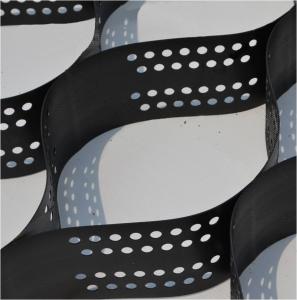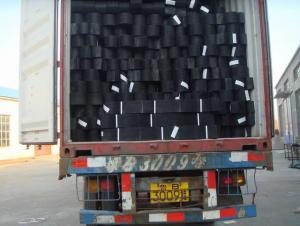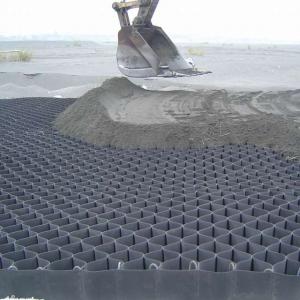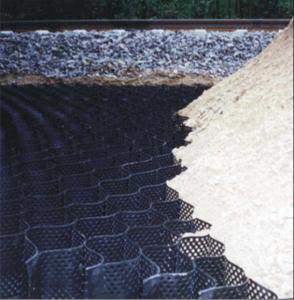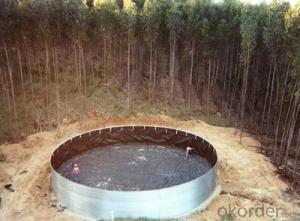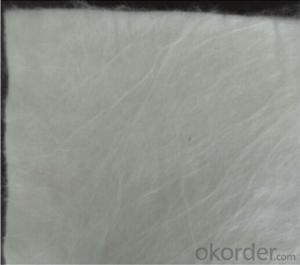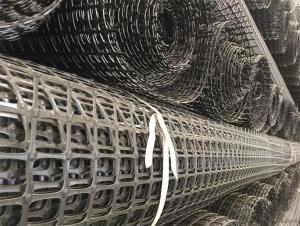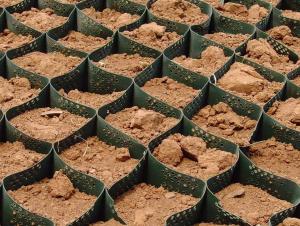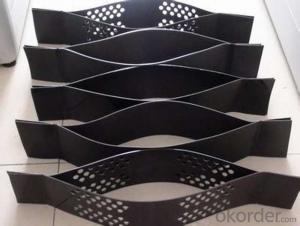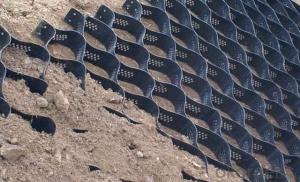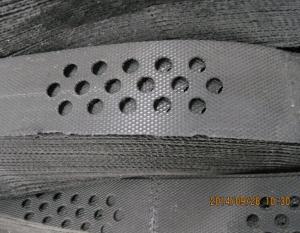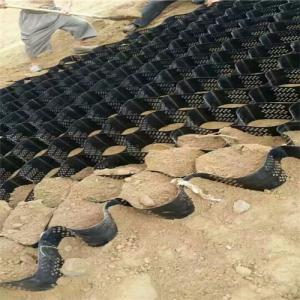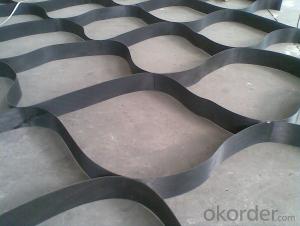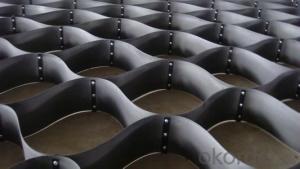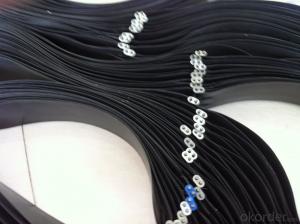Manufacture Of Geocell
- Loading Port:
- Qingdao Port
- Payment Terms:
- TT or L/C
- Min Order Qty:
- 10000m2 m²
- Supply Capability:
- 450 million Per Year m²/month
OKorder Service Pledge
OKorder Financial Service
You Might Also Like
Introduction of Geocell:
CMAX Geocell is manufactured by quality HDPE material, has good performance on Anti-aging, resisting acid & alkaline, homogenous structure, best sidewise restriction and soil-fixation, convenient and fast construction.
Applications of Geocell:
Make reinforcement treatment for soft soil foundation and protection of steep slope, used in highway, railway, airport, wharf, especially in air slaked mountain, desert and swamp land etc.
Specification of Geocell:
Model | Height(mm) | Welding Distance(mm) | Thickness(mm) | Tensile Strength of Welding point(N/cm) | Tensile Strength of the Geocell(N/cm) | Tensile Strength at Yield of Sheet(N/mpa) |
50-400 | 50 | 330-1000 | 1.1/1.2/1.5 | 100 | 120 | 20 |
75-40 | 75 | 330-1000 | 1.1/1.2/1.5 | 100 | 120 | 20 |
100-400 | 100 | 330-1000 | 1.1/1.2/1.5 | 100 | 120 | 20 |
150-400 | 150 | 330-1000 | 1.1/1.2/1.5 | 100 | 120 | 20 |
200-400 | 200 | 330-1000 | 1.1/1.2/1.5 | 100 | 120 | 20 |
Note: Customer could choose the suitable width, height, thickness etc. when the order confirmed | ||||||
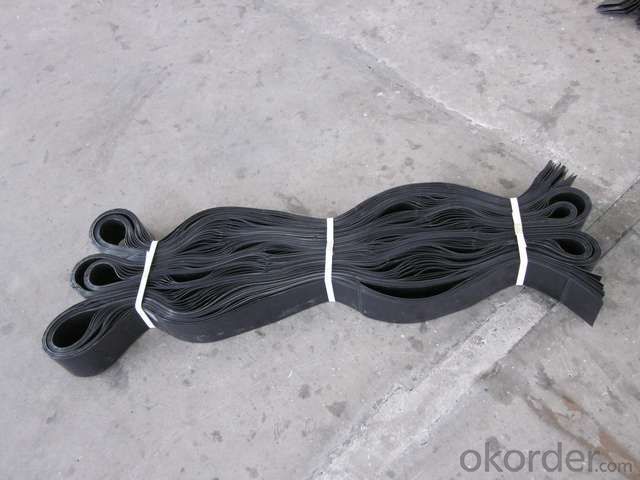
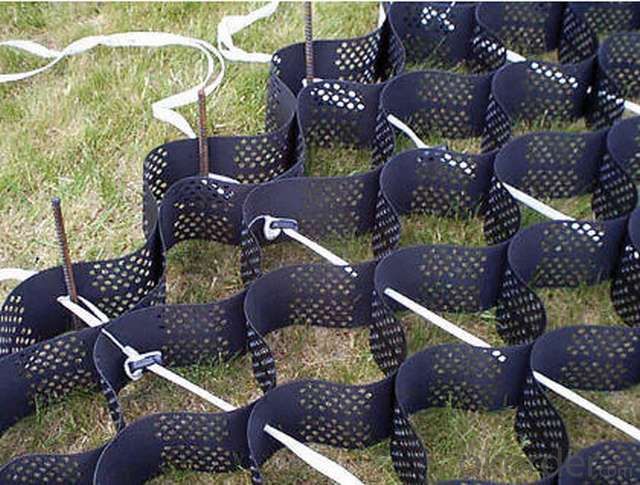
- Q:How do geocells improve the stability of landslide-prone areas?
- Geocells improve the stability of landslide-prone areas by providing a reinforced and stable foundation. The geocells, which are three-dimensional honeycomb-like structures made of high-density polyethylene, are filled with soil or aggregate material. This filling increases the overall weight of the area and enhances its resistance to sliding. Additionally, the geocells provide confinement to the fill material, preventing it from spreading and settling. This confinement promotes better load distribution, reduces soil erosion, and helps in vegetation growth, ultimately strengthening the slope and reducing the risk of landslides.
- Q:Can geocells be used in load transfer platforms for power plants?
- Yes, geocells can be effectively used in load transfer platforms for power plants. Geocells are cellular confinement systems that provide stability and load-bearing capacity to the ground. They can be utilized to create a stable and strong foundation for heavy loads, such as those found in power plants. By distributing the load evenly and preventing lateral movement, geocells can enhance the structural integrity and longevity of load transfer platforms, making them suitable for power plant applications.
- Q:Are geocells suitable for creating walking paths?
- Yes, geocells are suitable for creating walking paths. Geocells provide a stable and durable surface that helps with soil stabilization and prevents erosion. They are easy to install and can be filled with various materials like gravel or sand to create a firm and level walking path. Additionally, geocells are cost-effective and environmentally friendly, making them an excellent choice for creating walking paths in various terrains.
- Q:How do geocells improve the performance of unpaved parking areas?
- Geocells improve the performance of unpaved parking areas by providing a stable and reinforced base. These honeycomb-like structures made from high-density polyethylene (HDPE) are filled with aggregate materials, creating a strong and load-bearing foundation. Geocells prevent the migration and displacement of the aggregate, effectively reducing rutting, erosion, and potholes. This enhances the overall durability, load-bearing capacity, and longevity of the parking area, while also minimizing maintenance requirements.
- Q:How are geocells constructed?
- Geocells are constructed by connecting individual panels or cells made of high-density polyethylene (HDPE) or other suitable materials together to form a honeycomb-like structure. These cells are then filled with compacted soil, aggregate, or other fill materials, providing stability and reinforcement for various applications such as erosion control, slope protection, and ground stabilization.
- Q:Are geocells suitable for use in landfill applications?
- Yes, geocells are suitable for use in landfill applications. Geocells provide stabilization and reinforcement to the landfill liner system, preventing erosion, improving load distribution, and reducing the overall environmental impact of the landfill. Additionally, geocells offer cost-effective solutions and increased lifespan to landfill infrastructure.
- Q:Can geocells be used in seismic retrofitting?
- Yes, geocells can be used in seismic retrofitting. Geocells are three-dimensional cellular confinement systems made from high-density polyethylene (HDPE) strips, which are filled with granular materials such as soil or aggregate. These cells provide enhanced load-bearing capacity and lateral confinement to the soil, making them suitable for improving the stability and performance of structures during seismic events. Geocells can be used to reinforce slopes, retaining walls, foundations, and embankments, thereby reducing the potential for soil liquefaction and enhancing the structure's resistance to seismic forces.
- Q:Can geocells be used for channel lining?
- Yes, geocells can be used for channel lining. Geocells are a versatile and effective solution for stabilizing soil and preventing erosion in various applications, including channel lining. They provide a stable and reinforced structure that helps retain soil and prevent sediment movement, thereby enhancing the longevity and stability of the channel.
- Q:How do geocells enhance the stability of railway embankments?
- Geocells enhance the stability of railway embankments by providing structural support and reinforcement. These three-dimensional honeycomb-like structures are filled with compacted soil or aggregate material, creating a stable platform that distributes the load evenly and reduces lateral movement. The confinement effect of geocells prevents soil erosion, improves slope stability, and enhances the overall performance of the embankment, ensuring long-term durability and safety for railway operations.
- Q:How do geocells reduce the need for aggregate materials?
- Geocells reduce the need for aggregate materials by confining and stabilizing the soil within their cells, which eliminates the necessity for excessive use of traditional aggregate materials. The cells efficiently distribute the load and increase the load-bearing capacity of the soil, reducing the thickness of the aggregate layer required for construction projects.
1. Manufacturer Overview |
|
|---|---|
| Location | Shandong, China |
| Year Established | 2000 |
| Annual Output Value | Above US$ 20 Million |
| Main Markets | North America; South America; Eastern Europe; Southeast Asia; Africa; Oceania; Mid East; Eastern Asia; Western Europe; Central America; |
| Company Certifications | ISO 9001:2000 |
2. Manufacturer Certificates |
|
|---|---|
| a) Certification Name | |
| Range | |
| Reference | |
| Validity Period | |
3. Manufacturer Capability |
|
|---|---|
| a)Trade Capacity | |
| Nearest Port | Qingdao Port |
| Export Percentage | 41% - 50% |
| No.of Employees in Trade Department | Above 10 People |
| Language Spoken: | English; Chinese; |
| b)Factory Information | |
| Factory Size: | Above 17,0000 square meters |
| No. of Production Lines | Above 10 |
| Contract Manufacturing | Design Service Offered; Buyer Label Offered |
| Product Price Range | High; Average |
Send your message to us
Manufacture Of Geocell
- Loading Port:
- Qingdao Port
- Payment Terms:
- TT or L/C
- Min Order Qty:
- 10000m2 m²
- Supply Capability:
- 450 million Per Year m²/month
OKorder Service Pledge
OKorder Financial Service
Similar products
New products
Hot products
Hot Searches
Related keywords

